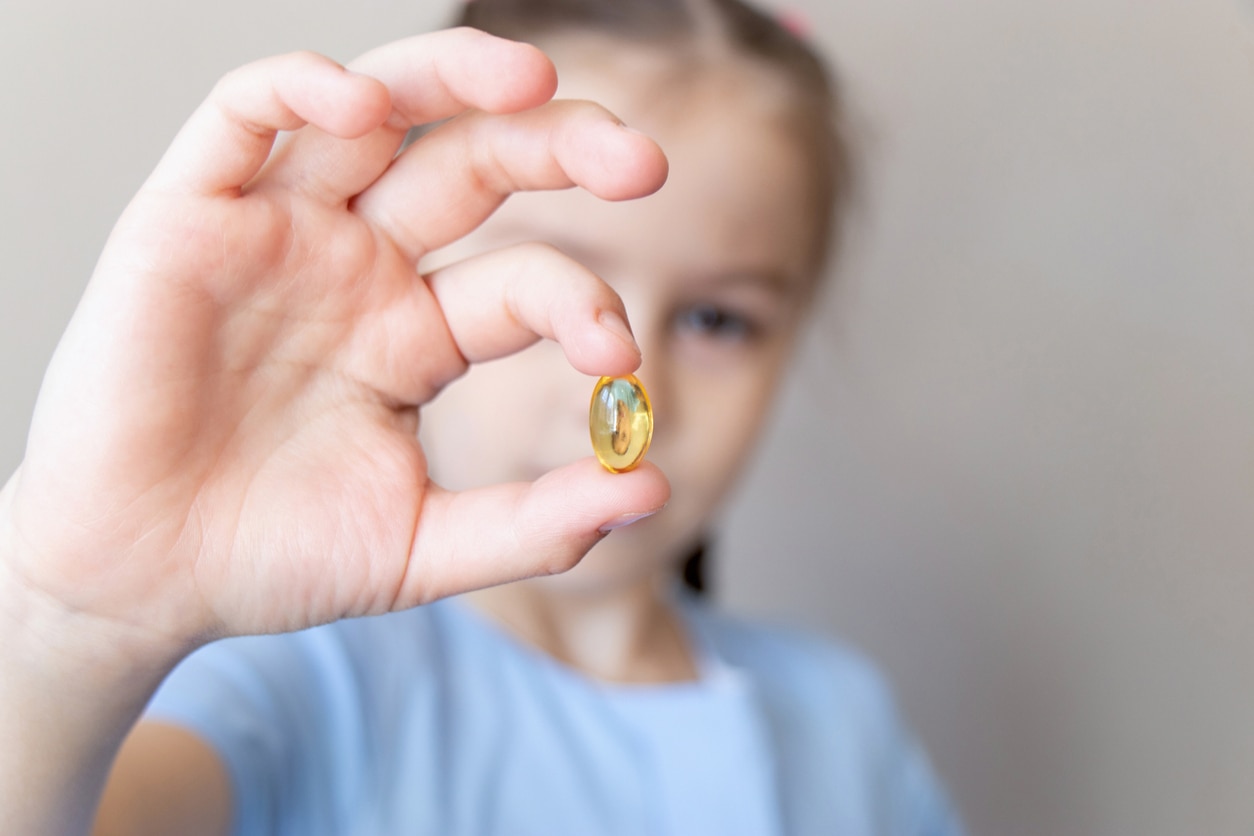
We’ve long been told the importance of a healthy and well-rounded diet in a child’s life. Now, a collection of new articles published in the National Library of Medicine (NIH) highlights how big of a role certain foods play. And it sounds like most children are missing a significant piece of the puzzle! Fortunately, one diet and parenting expert says getting them back on track may be easier than we think.
Kids Aren’t Getting Enough Vitamin D
According to the information published by the NIH, 50 percent of children between the ages of 1 and 5, and 70 percent of children between the ages of 6 and 11, are deficient in vitamin D.1
Vitamin D plays a vital role in developing and maintaining bone health.3 It’s nicknamed the “sunshine vitamin,” thanks to how the body reacts to vitamin D3 (AKA: cholecalciferol) during sun exposure.1,4
In 2020, the Endocrine Society and several other organizations developed guidelines on vitamin D requirements for infants and children. According to their findings, babies under the age of 1 need 400 to 1,000 International Units (IUs) of vitamin D a day, and those between the ages of 1 to 18 need 600 to 1,000 IUs.1,2
To put that in perspective, you can get that same amount from 15-30 minutes of direct sun exposure.2 But as busy parents know, sometimes even getting in that daily walk around the block can be challenging, so they may need to turn to other alternatives.
There Are High Levels of Vitamin D in Several Foods
There are a wealth of foods naturally high in vitamin D. Fatty fish like salmon, trout, and sardines are among them.5 But not many of these foods are likely to be on your child’s list of favorites, especially younger kids who may prefer chicken nuggets to a side of salmon.
Some foods can be fortified with vitamin D (or have vitamin D added to them during processing). This list includes some snacks toddlers ask for time and time again, like milk (both plant-based and dairy), OJ, yogurt, and even some cereals.1
Even with all those snacktime faves on the list, this age group is lacking in their daily vitamin D intake.1 And they’re not alone.
Babies Also Need More Vitamin D

Many infants consume most of their nutritional content from breast milk or formula. So, hitting those daily vitamin D numbers is harder for them. Breastfed babies face an added barrier since, unlike formula, breast milk can be easily fortified with the added vitamin D needed.6
“Many health organizations recommend liquid supplements for infants who consume breast milk, since human milk alone doesn’t provide enough vitamin D,” Jennifer Anderson, registered dietician and founder of Kids Eat in Color, writes for CNBC.
“Vitamin D drops can be bought over the counter and given to an infant to help them meet their daily requirement of 400 IU.”
Many new parents are counseled on this during pregnancy, by the hospital after delivery, or once they take their baby to meet the pediatrician. Still, they may not realize how vital the “sunshine vitamin” can be to their child’s health and well-being.
A Vitamin D Deficiency Can Have Lasting Impacts
There are many ways a lack of vitamin D can present in children. The body’s initial response can be fatigue, pain, and a compromised immune system.6
Children will likely have more severe complications when that deficiency lasts long. These may include rickets, bone pain, joint deformities, and changing growth patterns that can lead to shorter stature.6
All that may sound scary, but that doesn’t mean you must rush out and load up on vitamin D supplements. Jennifer says a conversation with your pediatrician can help determine whether your child is meeting their daily nutritional requirements. From there, the two of you can decide what changes to make to your child’s diet, including which supplements will help them along the day.
from Baby Chick https://ift.tt/eli4JDt
via IFTTT


0 Comments
Please ,
Don't enter span link ...